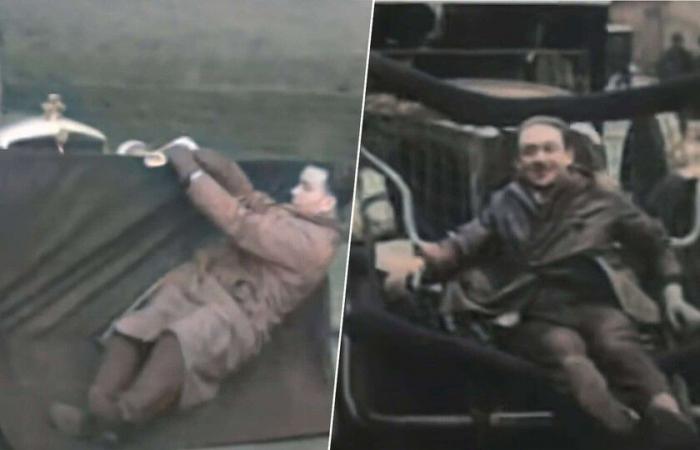
-
From a shovel as if it were a snowplow to a roller coaster bar to an airbag in the nose
-
For 100 years, some crazy things have been tried to reduce the damage to pedestrians after a collision.
Car technology continues to evolve and they are increasingly loaded with driving and safety assistance systems. But no matter how much technology they have, pedestrians are always on the losing end when hit. It is a problem that has been there practically since cars began to circulate and to which we have been trying to solve for 100 years.
And one idea was to create a kind of airbag for pedestrians in the front of cars.
The abuses. At 30 km/h, the possibility of dying from a collision is 10%, but it rises to 80% if that speed is 50 km/h. At 60 km/h, the percentage is 100%. These are figures from the DGT and it is evident that our bodies are not prepared to withstand the force of a crash at that speed.
Curiously, the problem of road accidents seems to occur in areas. In 2022, for example, more than 7,500 people were killed by vehicles in the United States, the worst figure in the last 40 years. In Europe, things were different, since from 2010 to 2020, the number of deaths had decreased by 36%. To contextualize, in Spain 1,104 people died from accidents in 1993. In 2021 there were 183.
In any case, there are still many of them and that is why there are different proposals such as painting city streets or managing traffic with GPS fences in cities. In addition to continuing to refine the accident prevention systems, which continue to fail when it is most needed.
The French shovel. Bridget Driscoll has the curious honor of being the first person to be hit by a vehicle in history. At least, let her be aware of it. It was on August 17, 1896 when one of the few cars that were in Great Britain at that time ran over the 44-year-old woman at “tremendous speed, as fast as a good horse could gallop.” An investigation was opened, but the important thing is that it was a turning point that encouraged manufacturers and inventors to put their talent to work to avoid more abuses in the future.
One of those documented systems was a type of ‘shovel’ that was tested in Paris in 1924 and which consisted of something similar to a brush or shovel that would “sweep” the pedestrian who was lying on the ground to avoid running over him and running over him with the tires. Like a snowplow, wow.
Something similar was also tried in Berlin, but with a network. Goodbye ankles.
The pedestrian catcher. It seems that this shovel did not go any further, but what was marketed in 1939 was an invention that served a double function. It was a kind of tarp on a metal frame that could catch pedestrians before they were hit, like a huge baseball mitt on the nose of a car. Since it would be uncomfortable to always have it there, when it was not needed it was folded and acted as a bumper.
The system, evidently, was not automatic and the driver had to pull a lever that activated the mechanism. At a moderate speed, the device allowed the pedestrian to hold on to it and, in addition, like the French shovel, it would prevent him from being run over. However, if the speed was high or the driver did not operate the lever in time, there would be problems. It didn’t last long on the market.
Other solutions. That pedestrian catcher wasn’t the only time manufacturers flirted with additions to the nose of the vehicle to minimize damage. A very curious one is a type of safety bar that was tested in 1974 (with cars much superior in power to those of 1939) and that, now automatically, rose when a pedestrian was hit so that he would not be thrown away, but rather to remain on the hood of the car during braking.
And for other vehicles? For obvious reasons, none of these systems has survived to this day, but curiously, a few weeks ago we saw that in Switzerland they are testing an airbag system very similar to the pedestrian trap. It is an inflatable system placed on the front of a tram that is activated when it detects someone on the road, cushioning the blow although, from the images, it is still a fairly strong impact.
As we said, accidents continue to be a problem and, with more or less sense, society has tried to remedy them with the technological means available at each time. Although, in the end, a brick may be the most effective way to cross a pedestrian crossing. At least until we find something better (like barking trains).
Image |British Pathe
In Xataka | Dying in a traffic accident and being persecuted to pay the costs of the road: the bizarre case of a family





